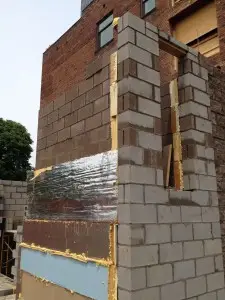
The El Moore building project is a great example of sustainable development. However the term, “Sustainable Development”, has a fairly wide definition, and can mean many different things to many different people. The most widely accepted definition comes from the Brundtland Commissions 1987 report and defines sustainable development as, “development which meets the needs of current generations without compromising the ability of future generations to meet their own needs”. This is the definition that best fits the El Moore’s goals of reducing environmental impact through proper planning and use of different energy saving building techniques.
While it is these techniques and energy saving efforts that bring the El Moore’s goals in line with the definition of sustainable development, the project goes a step further to also create a community of people that is itself sustainable. This sustainability is not only in terms of consumption, but also in regards to interactions with the surrounding communities. To do this there is specific development that is focused on creating these interactions to benefit the overall health of the community.
As well as the above, the El Moore project follows the ‘Triple Bottom Line’ idea for development. The ‘Triple Bottom Line’ is primarily used in business development as a guide to help keep the three pillars of the model (Social, Environment and Economic) in balance. In a traditional business development model the bottom line refers simply to the profit margin, or lack there of, as the basis for decision making. However, when it is exclusively the economics influencing a decision, in terms of sustainability it generally comes at the expense of society and the environment. This is what the ‘Triple Bottom Line’ is designed to protect against, and help lead to more environmentally conscious as well as socially conscious development, as opposed to development based solely on economics.
